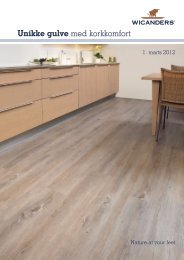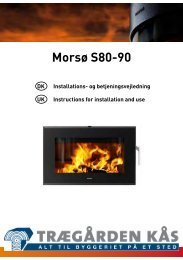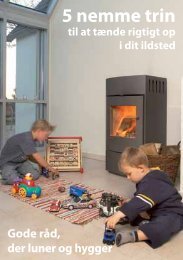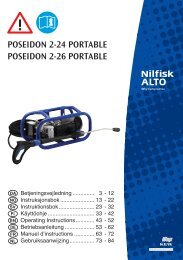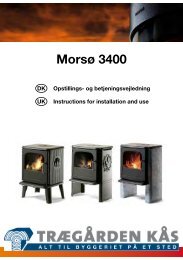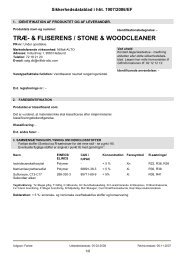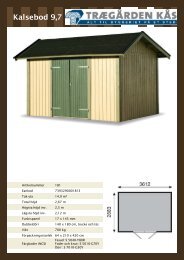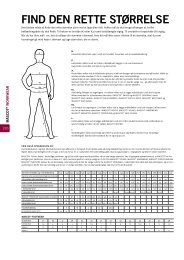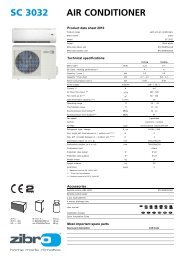Morsø 1710
Morsø 1710
Morsø 1710
You also want an ePaper? Increase the reach of your titles
YUMPU automatically turns print PDFs into web optimized ePapers that Google loves.
1.0 Installing your <strong>Morsø</strong> stove<br />
1.1 Unpacking the stove<br />
We recommend that this job be undertaken by two persons since the stove is heavy for one<br />
person to handle.<br />
The MORSØ <strong>1710</strong> weighs approx. 120 kg.<br />
In order to avoid damage to the stove and the floor, we recommend that you use the cardboard<br />
packaging as an underlay.<br />
1.2 Installing the stove<br />
National and local regulations regarding the installation of wood-burning stoves must be observed,<br />
as must local regulations regarding chimney connections and chimney installation.<br />
You may want to ask your chimney sweep for advice. However, you, your technical adviser<br />
or tradesman are responsible for ensuring that the installation complies with the applicable<br />
national and local regulations.<br />
1.3 Chimney sweep<br />
As stated, it may be wise to consult your local chimney sweep before installing the stove.<br />
In any event, the chimney sweep must be notified once the wood-burning stove has been<br />
installed. The chimney sweep will inspect the installation and schedule sweeping intervals<br />
with you. If your chimney has not been used for some time, it should be inspected for cracks,<br />
bird’s nests etc., before it is used.<br />
1.4 Location of the stove/distance requirements<br />
Distance requirements apply only if the stove is placed against combustible materials. Your<br />
new stove can be positioned as specified on the certificate of approval on the back of the<br />
stove if the walls are made of combustible material. A layer of wallpaper on a brick wall is<br />
normally regarded as non-combustible material.<br />
A non-combustible underlay or hearth must cover the flooring at least 30 cm in front of the<br />
stove door and at least 15 cm at the sides.<br />
Clearances to furniture<br />
The normal recommendation is that you should allow a distance of min. 800 mm from the<br />
stove to any furniture, but you should also assess whether the furniture or anything else will<br />
be affected by its proximity to the stove, e.g. drying out.<br />
The distance to combustible material in front of the stove must be min. 800 mm.<br />
A wood-burning stove gets extremely hot when in use. Caution must therefore be exercised,<br />
particularly with regard to children touching the stove.<br />
The handle also heats up during firing, for which reason a special glove is supplied with<br />
the stove.<br />
The <strong>Morsø</strong> <strong>1710</strong> complies with the requirements of the EN 13229 standard.<br />
The distance from an insulated wall clad with a combustible material must be min. 400 mm<br />
from a side wall and 150 mm from the back wall. The walls must be clad with 50 mm noncombustible<br />
insulation.<br />
If the casing extends all the way up to the ceiling, the ceiling must also be covered with 50<br />
mm thick insulation.<br />
The flue outlet must be min. 400 mm from the ceiling. The Norwegian research organisation<br />
SINTEF NBL recommends that a non-combustible plate is installed in the casing just above<br />
the flue outlet, min. 400 mm from the ceiling.<br />
The distance from brick wall must be min. 150 mm to the side and 100 mm back.<br />
19





